CLELIA
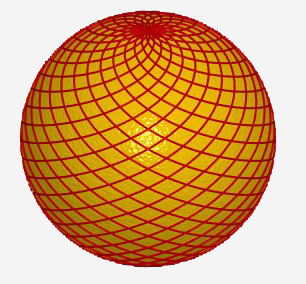
| next curve | previous curve | 2D curves | 3D curves | surfaces | fractals | polyhedra |
CLELIA

| Curve studied by Pappus in a special case, and by Guido
Grandi in 1728; he is the one who named it clelia as a tribute to the countess
Clelia Borromeo, and not to the legendary Roman heroine, or the main
character of a novel by Mme de Scudery!
Other name: spherical (Archimedean) spiral. |
| Spherical equation: Cartesian parametrization: Cylindrical equation: Spherical curve, algebraic iff n is rational (degree = 2 Curvilinear abscissa: Length of the base pattern: |
| The clelias are the loci of a point M on
a meridian of a sphere
rotating at constant speed w around the polar
axis, the point M also moving at constant speed nw
along this meridian.
Therefore, physically, we obtain a clelia when peeling an orange or when rewinding regularly a spherical wool ball. |
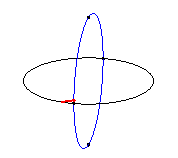 |
| The clelias are also obtained as the intersection between
a generalized Plücker
conoid : Opposite, the case n = 3: the intersection is composed of 2 symmetrical clelias. |
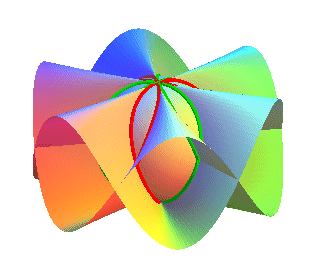 |
| The curve is built from a base pattern (represented opposite),
symmetrical with respect to Ox, obtained for The curve is symmetric with respect to xOy iff p and denominator q are odd, otherwise it is symmetric with respect to O. |
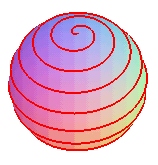 |
When n is rational with numerator p and denominator q,
In this case, the curve is composed of 2p patterns,
obtained from the base pattern by rotations of axis Oz and angles
and
+
p.
When p and q are odd, the curve is composed
of p patterns, obtained from the base pattern by rotations of axis
Oz
and angles .
Examples:

n = 1: Viviani curve. |
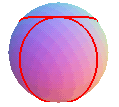
n = 2 |
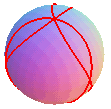
n = 3 |

n = 4 |

n = 5 |
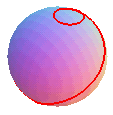
n = 1/2 |
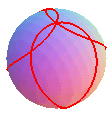
n = 3/2 |
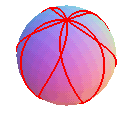
n = 5/2 |
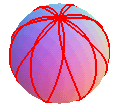
n = 7/2 |

n = 9/2 |
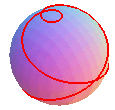
n = 1/3 |
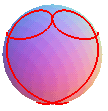
n = 2/3 |
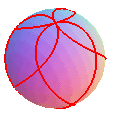
n = 4/3 |

n = 5/3 |

n = 7/3 |
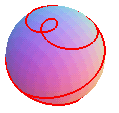
n = 1/4 |
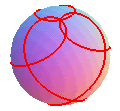
n = 3/4 |
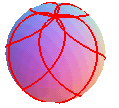
n = 5/4 |

n = 7/4 |

n = 9/4 |
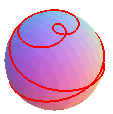
n = 1/5 |
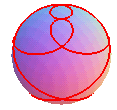
n = 2/5 |
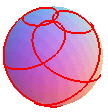
n = 3/5 |

n = 4/5 |
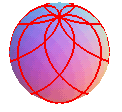
n = 6/5 |
If you have the software Maple and wish to manipulate these figures, download this file.
The (orthogonal) projection on xOy is the rose.
The conical projection with center O on the plane
z
= R is the knot: .
The stereographic projection from the South pole is the
knot: .
| The clelia |
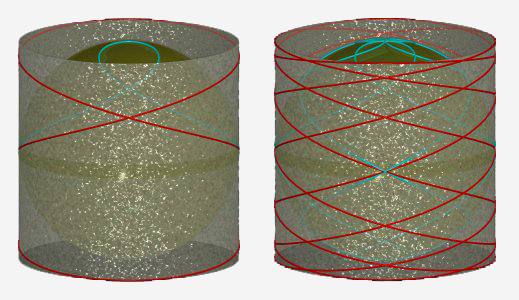
Figure made by Alain Esculier |
| It is also the central projection with center O
of the cylindrical
tangent wave |
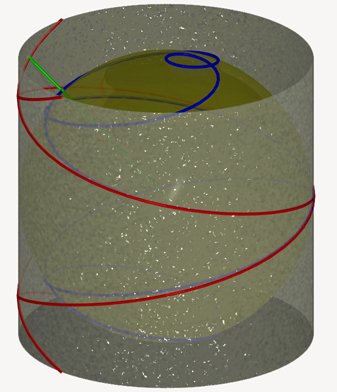 |
The clelias are limit cases of torus solenoids.
Do not mistake the clelias for spherical
helices, or rhumb lines.
| The clelia for n = 2 is a limit case of the seam line of a tennis ball; it is also, as we've seen above, the intersection between the Plücker conoid and a sphere. |
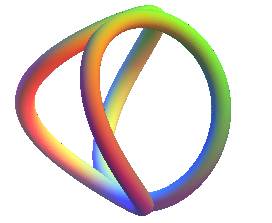 |
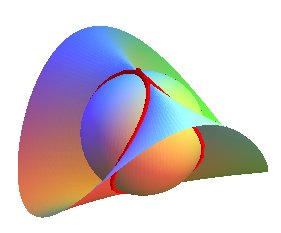 |
| The coordinate lines of this parametrization of the sphere: |
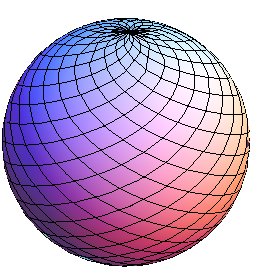 |
| The mesh of this net, that creates squares when it is
flattened, forms curves that look like clelias when the net encircles a
spherical ball.
Nonetheless, if we consider that the net is made of an inelastic mesh, and that only the angles can vary, then the mathematical solution to this problem is not a lattice of clelias; see here such a dressing of the sphere. |
 |
Compare to the conical
roses, and the 3D basins,
that can also be projected onto planar roses.
| next curve | previous curve | 2D curves | 3D curves | surfaces | fractals | polyhedra |
© Robert FERRÉOL 2018